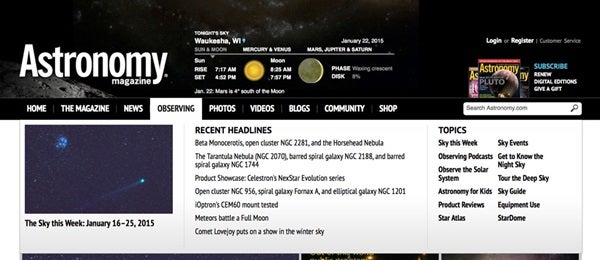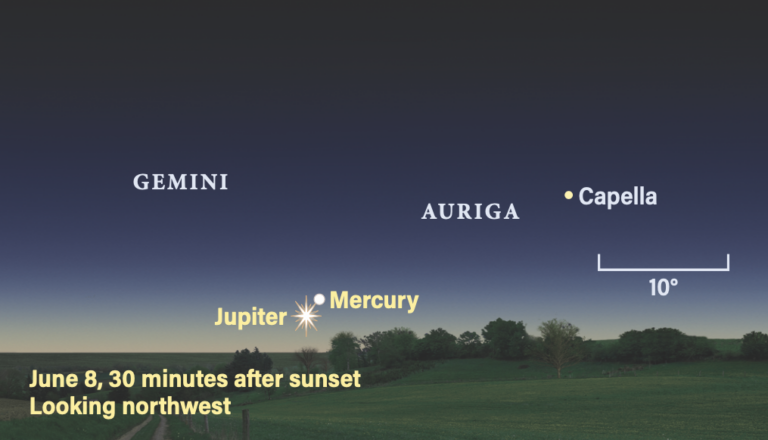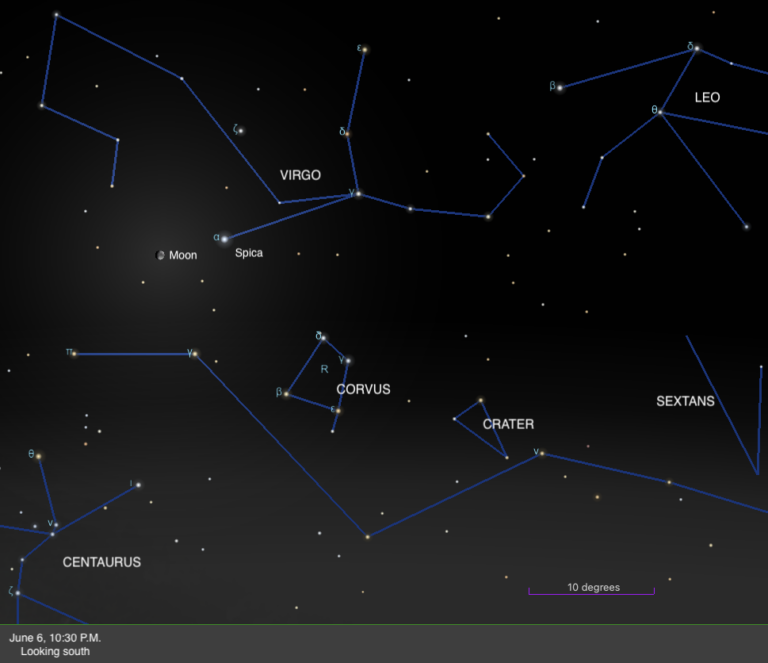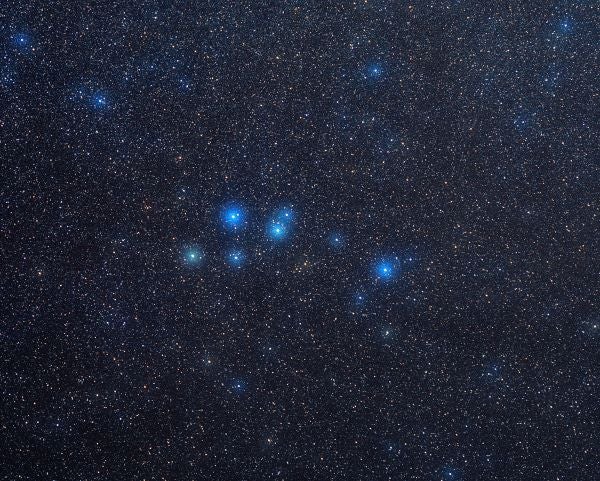If inclement weather has you and your telescope grounded, Astronomy.com will keep you cosmically connected. There’s a lot to explore, so let’s get to our computers, log on, and see what we can find. We’ll begin with sections accessible to anyone, regardless of subscription status.
A good place to start is “The Sky this Week,” a day-by-day account of celestial happenings spanning the current 10-day period. It’s one of a dozen topic selections found in the “Observing” drop-down menu at Astronomy.com. “The Sky this Week” might find us gazing wistfully at a description of what’s currently going on above the clouds, but do we really want to know that we’re missing a major meteor shower or rare planetary alignment? Better to think positive and look ahead to upcoming sky events we’ll be able to enjoy when (fingers crossed!) skies clear.
No matter what our level of expertise, we need to pay attention to the techniques that make us successful backyard astronomers. To that end, the “Observing” section serves up an assortment of how-to articles and videos. The subsection “Get to Know the Night Sky” includes articles on “The starry sky” (a seasonal primer on star and constellation identification), “How to use a star chart” (a guide to using the StarDome map in the center of each issue of Astronomy), “Choose a star atlas that’s right for you,” and articles dedicated to urban skygazing. The “Observe the Solar System” and “Tour the Deep Sky” subsections combine basic facts about the solar system bodies with pointers on how to observe them.
A key “Observing” subsection is “Equipment Use” — a must-visit destination for anyone seeking information on astronomical equipment. Looking for guidance on purchasing that first telescope or binoculars? It’s here. Want to know about accessories like eyepieces, finder scopes, or filters? “Equipment Use” has the inside scoop.
Among the benefits to being a registered user is access to Senior Editor Michael E. Bakich’s “Observing Podcasts,” weekly spotlights on currently visible deep-sky destinations. Last month, I stressed the importance of having a prepared list of sky objects prior to observing. A rainy evening gives us time to assemble lists for future clear nights, and “Observing Podcasts” is our go-to place to get started. We can work on the objects featured in this week’s edition or scroll down to April podcasts of previous years to add even more.
There’s much more to Astronomy.com’s “Observing” section, but we’ll move on to the “Videos” section next. Two video series of particular interest are “Observing Basics” (not my column — that comes later) and “Seasonal Observing.” The former is a collection of Bakich video clips that help you get the most from your equipment. The latter includes a video of easy-to-find targets in the current season’s sky, which is available to registered users, as well as other videos available exclusively to subscribers of Astronomy magazine (as are all Astronomy.com items accompanied by an “A+” symbol) that feature seasonal lists of deep-sky objects.
I’ve been writing the “Observing Basics” column for over a dozen years. If you’re an Astronomy subscriber, you can access an archive of these articles at www.Astronomy.com/Chaple. I can’t say I’ve covered every astronomy-related topic (it’s a big universe!), but you’ll find pieces devoted both to backyard astronomy techniques and easy-to-observe sky objects.
There’s so much to see on Astronomy.com that we may wish for the April rains to continue for the next few evenings so we can further explore its offerings. OK, that’s a stretch, but at least it gives us the option of pursuing our hobby on cloudy nights. So disparage not the rains of April, my friend! They bring not only May flowers, but also the chance to enhance our backyard astronomy experience.
Questions, comments, or suggestions? Email me at gchaple@hotmail.com. Next month: We track down the “runaway star.” Clear skies!











